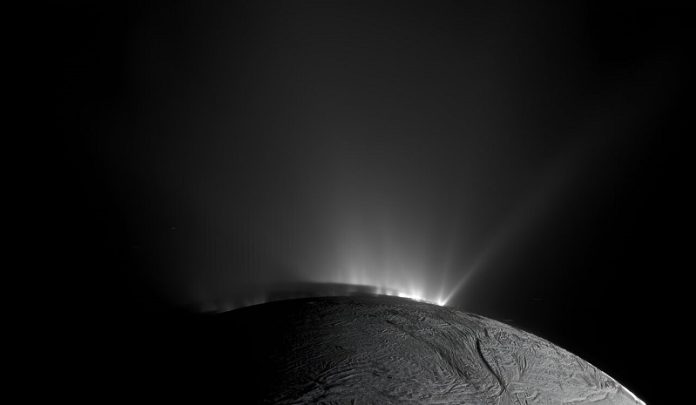
There’s some exciting news from the world of space exploration.
NASA’s Cassini spacecraft, which spent over a decade exploring Saturn and its moons, has sent back data that could point to the presence of life-supporting elements on Enceladus, one of Saturn’s icy moons.
This finding, published in Nature Astronomy, suggests that Enceladus might have the necessary ingredients for life as we know it.
Enceladus has long fascinated scientists. This small moon is famous for its massive plumes – geysers of ice and water vapor shooting out into space.
These plumes contain organic compounds, which are complex molecules made of carbon and are essential for life.
But the recent analysis of Cassini’s data has revealed something even more intriguing: the presence of hydrogen cyanide, a critical molecule for life’s beginnings.
Hydrogen cyanide plays a vital role in the creation of amino acids, the building blocks of proteins, which are necessary for life.
The versatility of hydrogen cyanide, akin to a Swiss army knife, makes it a central figure in theories about how life started. It’s like a puzzle piece that fits into many different life-creating scenarios.
But there’s more. Enceladus hides an ocean beneath its icy exterior, and this ocean is not just a cold, lifeless place.
It’s brimming with a variety of organic compounds that could be fueling life. These compounds are similar to those found on Earth, where they serve as energy sources for living organisms.
This discovery is significant because it suggests that Enceladus has a lot more chemical energy than previously thought. The more energy available, the higher the chances that life could exist and thrive there.
Jonah Peter, the lead author of the study and a doctoral student at Harvard University, explains that their findings not only show Enceladus as potentially habitable but also hint at how complex biomolecules could form there.
The study used detailed statistical analyses of the data collected by Cassini’s instruments, which measured the composition of gases, ions, and ice grains around Saturn. This approach allowed them to identify the best combination of chemical compounds that explain what Cassini observed.
In 2017, Cassini’s mission ended with the spacecraft making a planned dive into Saturn’s atmosphere. But the wealth of data it sent back continues to shed light on Saturn’s moons, especially Enceladus.
This moon’s ocean could provide much more energy than previously thought, akin to a car battery compared to a small watch battery.
However, it’s important to note that we’re still far from confirming life on Enceladus. What the researchers have found are pathways that could potentially support life.
These pathways need to be further studied, both through lab experiments and future space missions.
As Kevin Hand, co-author of the study and a scientist at JPL, puts it, the new findings suggest that Enceladus’s ocean could be a rich source of energy for life, if any exists there. Tom Nordheim, another co-author and JPL scientist, emphasizes that Cassini’s legacy lives on through such groundbreaking discoveries.
In summary, while the existence of life on Enceladus remains a question, the moon’s subsurface ocean, rich in organic compounds and hydrogen cyanide, presents an exciting possibility. It’s a reminder of the mysteries that still await us in our solar system and beyond.
Source: NASA.



